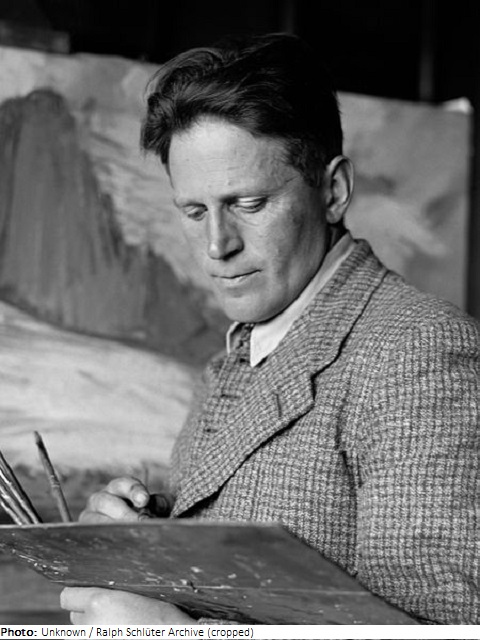Guðmundur Einarsson

Biographical information
| Roles | Competed in Olympic Games (non-medal events) |
|---|---|
| Sex | Male |
| Full name | Guðmundur•Einarsson |
| Used name | Guðmundur•Einarsson |
| Other names | Guðmundur frá Miðdal |
| Born | 5 August 1895 in Mosfellsbær, Höfuðborgarsvæði (ISL) |
| Died | 23 May 1963 in Reykjavík, Höfuðborgarsvæði (ISL) |
| NOC |  Iceland Iceland |
Biography
Guðmundur Einarsson or – as he was often called after his home farm – Guðmundur frá Miðdal was one of the most prominent Icelandic visual artists, combining numerous talents: as an illustrator, graphic artist, painter, sculptor, photographer, filmmaker, writer, and mountain climber. He received his artistic education first in Iceland and from 1919 in København and München. In his time Einarsson was controversial in Iceland, but later interest in his work grew. Because of his versatility, he left 1000s of works, many in public spaces. These include oil paintings, sculptures, glasswork, watercolors, prints and ceramics, drawings, furniture based on his designs, jewelry, brass and silverware, gardens, individual houses, and wall decorations. His style was eclectic and influenced by Romanticism. With the advent of modernism in Iceland, he also developed a tendency toward abstraction.
Einarsson was also one of the pioneers of mountaineering in Iceland. He was an explorer, active conservationist, hunter, and traveler, activities which resulted in books, photographs, and films. His son Guðmundur “Erró” (born 1932) also became a well-known visual artist, and his half-brother Ari Trausti (born 1948) a well-known geologist and writer.
In 1952 Guðmundur Einarsson was represented in the art exhibition with the plaster sculpture Hinn eilífi Ólympíueldur (Eternal Olympic Flame). It was one of two works that he created for the Helsinki Olympics and are now on display at the Varmá Sports Center in his hometown of Mosfellsbær.
Results
| Games | Discipline (Sport) / Event | NOC / Team | Pos | Medal | As | |
|---|---|---|---|---|---|---|
| 1952 Summer Olympics | Art Competitions |  ISL ISL |
Guðmundur Einarsson | |||
| Sculpturing, Open (Olympic (non-medal)) |